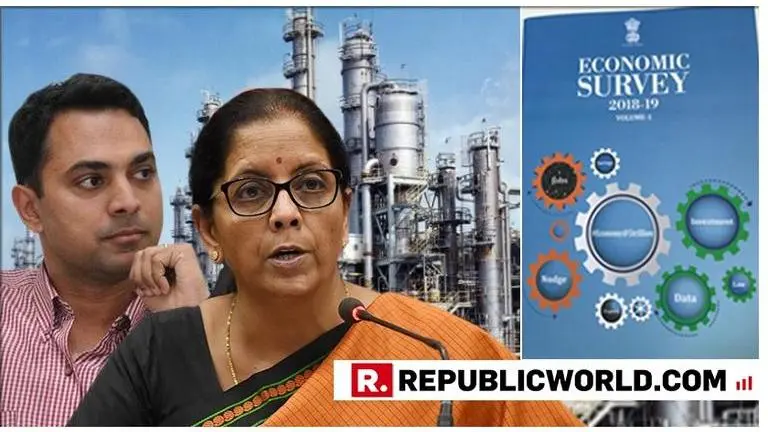Updated 4 July 2019 at 12:55 IST
BUDGET 2019: Economic Survey focuses on private industries for creating a 'virtuous cycle' of growth, to become $5 trillion economy
Changing the focus of the Modi government 2.0 from FDA to the private sector, the Economic Survey, prepared by CEA Krishnamurthy Subramanian and tabled in the Rajya Sabha on Thursday, has suggested that to achieve the aim of becoming a $5 trillion economy, a GDP growth rate of 8% must be maintained
- Economy News
- 3 min read

Changing the focus of the Modi government 2.0 from FDA to the private sector, the Economic Survey, prepared by CEA Krishnamurthy Subramanian and tabled in the Rajya Sabha on Thursday, has suggested that to achieve the aim of becoming a $5 trillion economy, a GDP growth rate of 8% must be maintained. It states that to do so the focus must be on savings, investment supported by the private industry which is a 'key demographic" in creating jobs.
"Such growth can be sustained by a "virtuous cycle" of savings, investment and exports. Private investment is the "key driver" that drives demand, creates capacity, increases labour productivity - generates jobs. Capital investment fosters job creation as the production of goods, research & development and supply chains generate jobs," states the survey.
The non-Anglo Saxon 'equilibrium' approach
Differing the Anglo-Saxon growth model for India, the survey states that it views economic equilibrium differently adding that traditionally job creation, demand, exports and economic growth are tackled as different problems. Explaining how these macroeconomic issues can be tackled by the above mentioned 'virtuous cycle', the survey states:
"By presenting data as a public good, emphasizing legal reform, ensuring policy consistency and behaviour changes through behaviour economics, the Survey aims to enable a self-sustaining virtuous cycle," states the survey.
Macroeconomic issues in the survey
The survey in its headline projection has pegged India's GDP growth for the ongoing 2019-20 fiscal at 7.0%, alongside a number of other key macro statistics and forecasts.
Advertisement
As mentioned above, the Economic survey was tabled, first in the Rajya Sabha, and projects that GDP growth for the ongoing fiscal will rise to 7.0% versus 6.8% in the fiscal that just ended, meaning that India would remain the fastest-growing major economy in the world. It also termed the macroeconomic condition as 'stable' for the same period, holding that structural reforms of the last few years are continuing to enable growth.
The Economic Survey also outlined that investment rate - likely to be key to what emerges from the Budget on Friday, seems to have bottomed out, with details likely to come to the fore in due course.
Advertisement
What is in the Economic Survey?
The Economic Survey is a survey that outlines challenges and gives a report of economic performance. The survey document has two parts. One part consists of commentary on the state of the economy, which is released before the Union Budget. The other part carries key economic statistics and data, which is tabled in July or August. This split in the presentation took effect after the Union Budget was moved from the last working day of February to the first day of the month in 2017. The Economic Survey serves as a useful policy document since it also contains policy ideas, key statistics on economic parameters and in-depth research on macro and sectoral trends. Often, the survey serves as a policy guideline for the Union Budget. However, its recommendations are not binding on the government.
Published By : Suchitra Karthikeyan
Published On: 4 July 2019 at 12:40 IST
